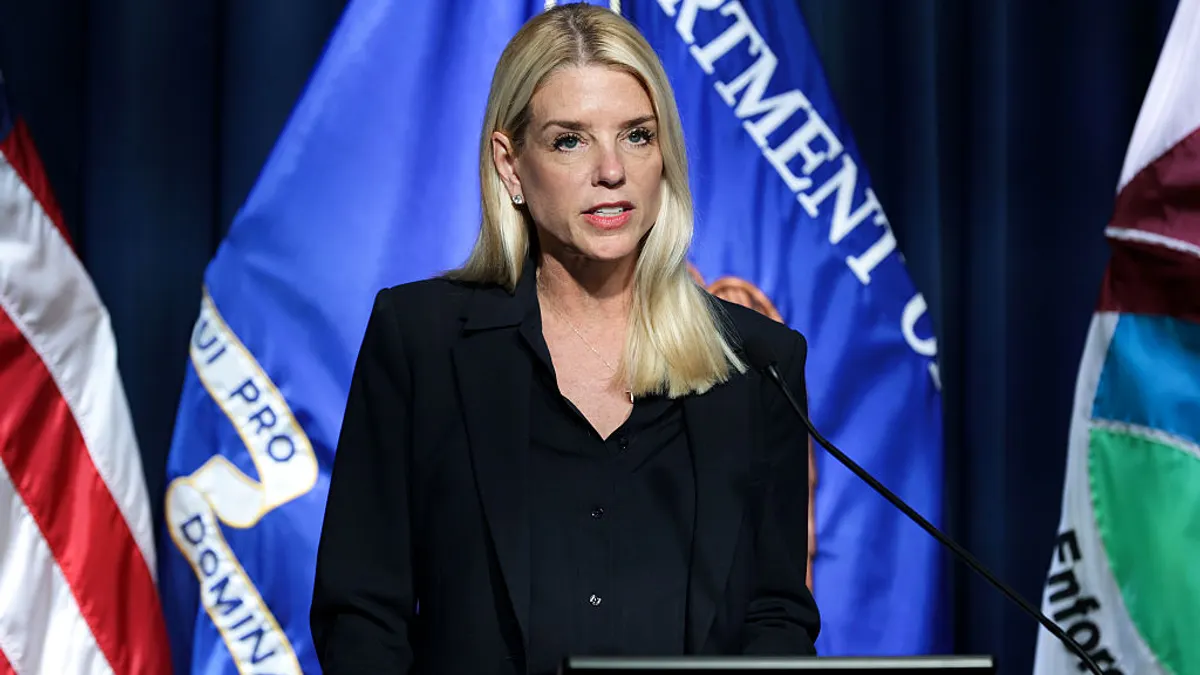Stepping into the concourse of Chicago's McCormick Place, the more than 20,000 attendees to the Society of Human Resource Management's (SHRM) annual conference were greeted by a vast open space with lofty ceilings. The architecture practically begged those beneath it to look upward, if just for a moment.
Appropriately, that was the nature of the overarching question posed by SHRM CEO Johnny C. Taylor Jr. during the event's opening keynote: Could those within the HR profession elevate it, especially in an era where political, economic and social storylines converge with the workplace as their flash point?
The industry has a few objectives to work toward to properly respond to that call, if the speakers and sessions at SHRM 2018 are to be believed. We've recapped five of the most talked-about of those themes below.
HR is still seeking a path to 'a seat at the table'
Speakers throughout the conference spoke about this being a unique moment for HR to seize a seat at the leadership table. #MeToo and toxic culture conversations, cutthroat competition for top talent and increased awareness of the importance of employer brand to business success have caught the attention of the C-suite. HR has long seen itself as a business partner for company leadership, but too often, speaker after speaker noted, that hasn’t translated to access. Current forces could be changing that.
Executive leadership is coming around to the idea that people and culture, long the domain of HR, are critical to business success. Nearly a dozen sessions at SHRM directly addressed how HR can have its voice heard and more effectively advocate for resources, and many more referenced strategies for weighing in. Speaking the language of the boardroom while keeping a focus on people is the new high-wire challenge for HR leadership, but experts said it also presents a tremendous opportunity.
"CEOs have distinct opinions about what you need to do, but they don't tell you," said Michelle M. Smith, an expert on leadership, workplace culture and talent and current VP, marketing at O.C. Tanner. Understanding what your CEO is thinking, and what they want to hear from you is critically important to succeeding, she said.
A seat at the table is particularly critical when it comes to creating a culture that doesn’t tolerate harassment. HR can only do the right things if it has the support of other leaders, said Jonathan Segal, a partner at Duane Morris. One of worst things executives can do is say "HR made me do this," or "this is coming from HR," he said; if people want to lead, they have to be responsible, and that includes delivering hard messages.
Inclusion, harassment and #MeToo are still top of mind
Sheryl Sandberg, COO of Facebook, may have been the last keynote speaker, but her comments put a pin in a discussion that dominated many of the sessions throughout the conference: how bias blocked real discussion about harassment and inclusion, and how HR can lead discussions for change at their organizations.
"It is not equal for women. It is not equal for people of color," she told the crowd. "It is not equal for mothers. If you are a black mother who is working, you have all the biases against you."
HR has to step in to actively manage these biases through policy, through culture and through a willingness to listen to employees of all backgrounds, experts at various sessions said. If not, unethical behavior, including harassment or even abuse, could spread throughout the organization.
"A lot of people believe it has reached epidemic proportions," Dennis Alan Davis, director of client training at Ogletree Deakins, said of unethical activities during a session on corporate misbehavior. About 60% of employees in a study cited during the session said that they knew of but had not reported instances of misconduct in their organizations. It may be a bit of an uphill battle, but it's one HR has to fight, experts said.
"It used to be for such a long time that HR was the last resort for addressing problems after they had already arisen," Oscar Munoz, CEO of United Airlines, said during the Monday keynote speech. "And that has to change, clearly."
Male allies will be an important part of addressing workplace discrimination and harassment based on sex, said Segal. "The challenges we have are too great for half the population alone to solve them," he said. "In these situations, there's something that would be tragically ironic that the responsibility to prevent and remedy harassment should be left to women when women are, more often than men, the victims."
To be bold, reflect before you react
HR must "be bold," according to the Monday keynote, but it shouldn't react reflexively — that can exacerbate a company's worse instincts, various talks implied. Thoughtful decision-making is at the core of what a strong HR department does each day, Paul Meshanko, CEO of Legacy Business Cultures, said during a session. Taking time to pause and be mindful is just as important as boldly moving forward.
As boring as they may seem, policies can help. Communicate core values and expect them from everyone, no exceptions, Davis said. Get executives to clearly state their support for the policy and make sure they understand that "they are under the microscope on many of these issues," he added. Data gathering can also help.
Remember to 'be human'
SHRM was a good reminder, too, about the importance of human resources remembering to be human. Taking the time to form real connections with individuals at your company was a big focus of more than one keynote speaker, including Sandberg and Coretha Rushing, CHRO at Equifax.
But on an actionable level, this ethos can be used to help recruiters breakthrough old plateaus when it comes to reaching candidates, Nancie Ruder, president and founder of Noetic Consultants, said during a session. Unpacking the candidate journey — understanding who they are, what they want and how you can communicate that — can go a long way in setting your company apart in the market.
Culture begins with the right people, not just 'fit'
If there's one lesson Adam Grant, professor at the Wharton School of Business, made clear in his discussion about workplace culture, it's that a list of sentences on a plaque isn’t what companies need.
"The work of cultural building and cultural change is always in progress," Grant said, adding that HR teams can't afford to allow their respective organizations to become "cultural museums". Part of that drive has to do with recruiting: the paradigm of hiring for 'culture fit' doesn’t lead to better market capitalization over time.
It's nice to have the right skills on the bus, but it's critical to keep the wrong values off the bus.
— Adam Grant (@AdamMGrant) June 19, 2018
Values aren't visible on a resume. They're revealed in the choices we make: speak up or stay silent, take responsibility or make excuses, lift others up or cut them down#SHRM18 pic.twitter.com/vFWhpL7WjP
So-called "takers" in an organization — those who are only out for themselves — can cause paranoia and other negative ripple effects in the workplace, Grant said, because they tend to take credit for others' ideas and create an environment in which creative thinking is stifled. Employers should seek their opposite, "givers," but Grant warned against relying too much on "agreeable givers" who are too afraid of rocking the boat to speak truth to power. Instead he told attendees to value the "disagreeable givers," who aren't afraid to push for change, however unpopular, and in the process advance the next innovative, outside-the-box ideas a company needs.
"I think the real challenge here is to figure out who the givers are, and who the takers are, before it's too late," he said.
When hiring managers focus on finding those "who can be buddies" with current employees, or those who will have good "chemistry" with their co-workers, it risks leaving out several avenues for diversity: of thought, of identity and other functional diversity, Grant said. "I want people to abandon the idea of cultural fit, and say hello to culture contribution."
"Instead of asking: 'What is our culture all about and how do we bring it to people who are going about their day?,' you want to ask: 'Is this important, and how are we going to find the people who will achieve it?'"



















